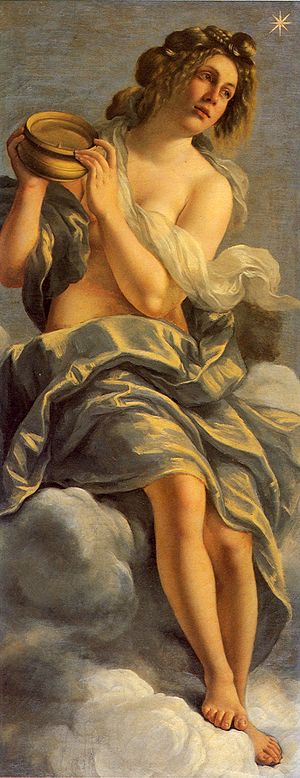 |
| Artemisia Gentileschi. Allegory of Inclination |
-- Artemisia Gentileschi
How did Artemisia Gentileschi become such a magnificent artist? She was born in Rome towards the end of the 16th century to the fairly successful artist Orazio Gentileschi (you might be familiar with Orazio from his painting called The Lute Player) and Prudenzia di Ottaviano Montoni. Artemisia was the oldest of four children and was introduced to drawing and painting in her father's workshop. She proved to be a quick learner and at an early age she was recognized as having promise as an artist.
Prudenzia di Ottaviano Montoni died when Artemisia was 12 years old. Prudentia died in childbirth and Orazio was left to manage his family along with his work. In early 17th century Italy young girls were generally kept out of the public eye. It appears that for the most part Orazio tried to follow this norm with Artemisia, going so far as to rent an upstairs apartment to a woman named Tuzia who some historians suggest was to be sort of a chaperone for Artemisia when Orazio was away from home.
Art and artists surrounded Artemisia. Orazio was a friend of Caravaggio, a controversial and influential Italian artist. Caravaggio's technique, known as tenebrism, relied on using deep shadow to enhance the light areas of the paintings. Artemisia was a follower of Caravaggio and his influence can be seen in her work. Her earliest work, Suzanna and the Elders, produced when she was about 17 years old. For years was attributed to her father, but when the signature on the back of the painting was compared to Artemisia's writings it was confirmed as her work. There is some evidence from this same period that even though Artemisia was to stay confined to the family living quarters she was working in her fathers studio, going so far as to provide instruction to his apprentices if he happened to be out of the studio.
At 18 Artemisia entered an extremely difficult time in her life. A family acquaintance and fellow artist, Agostino Tassi attacked and raped Artemisia. Orazio brought the suit because at this time a woman couldn’t bring rape charges. The trial was appalling and resulted in a slap on the wrist for Agostino. You can read more in the supplemental post "Slut Shaming in17th Century Italy".
Following the trial Artemisia married the artist Pierantonio Stiattesi and the newlyweds moved to Florence. Little is known of Pierantonio's work. He and Artemisia had a daughter named Prudentia. The marriage lasted only a few years. The couple had financial problems, Pierantonio was a philanderer and was extremely jealous of Artemisia. He finally walked out on her and Prudentia in 1622.
Artemisia joined Florence’s Accademia dell’Arte del Disegno in 1616 -- the first woman to do so. As a member of the Accademia, she was able to purchase paints and other art materials without the permission of her husband or father. This freedom proved to be instrumental when she and Pierantonio separated. She refined and developed her style and became known not only for her technical proficiency, but more importantly, the originality in the way she portrayed her subjects.
It is said that she was known for developing the rich yellow/gold color that is used in many of her paintings. It was known in the artist community as "Artemisia Yellow". The banner color for this blog is in honor of Artemisia.
About 1630 Artemisia moved to Naples. A few years later she went to London, where she worked alongside her father for King Charles I where they collaborated on the ceiling paintings of the Great Hall in the Queen’s House in Greenwich. She stayed on in London for at several more years until she finally settled in Naples.
Little is known of the later years of Artemisia's life. She is know to have painted several versions of the story of David and Bathsheba, but few other records of this part of her life survive. The rape trial, her unconventional life as a female painter, and her numerous paintings of powerful women struggling against male dominance did not endear her to the male aristocracy and her reputation suffered after her death. It was the early 20th century before art historians began to re-evaluate her work and contribution to the art world.
Artemisia is the definitive Bad Ass. Tough, intimidating and uncompromising.
++++++++++++++++++++++++
O'Neill, Mary. Artemisia’s Moment. Smithsonian Magazine, May 2002
Rockefeller, Hall W. Biography of Artemisia Gentileschi. The Thought Co., December 02, 2019. https://www.thoughtco.com/artemisia-gentileschi-art-biography-4571308
Artemisia Gentileschi.The Art History Archive.